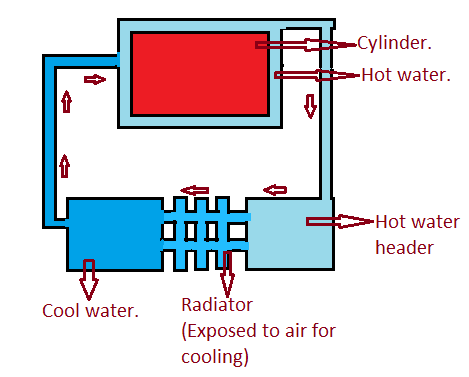What is a Transmission Yoke?
A transmission yoke is a type of automotive part that helps transfer rotary motion along the lengthwise axis through a universal joint connection. It’s an important component in the driveline that connects two shafts together, transferring power from one source to another. In this blog post, we’ll discuss the various types of transmission yokes, how they work, and why they are so important.
Types of Transmission Yokes
The most common type of transmission yoke is the slip-style yoke, which consists of two pieces: an inner hub and an outer tube. The inner hub is connected to the shaft and slides into the outer tube. This type of yoke is great for applications where there may be some misalignment between the two parts; it allows for smoother operation with less wear on both parts. Slip-style yokes are also easy to replace if they become damaged or worn out.
U-joint style yokes are similar but instead use a u-joint connection between the two parts rather than a sliding inner hub. This type of connection provides more stability and strength in applications where misalignment isn’t as much of an issue or where heavier loads need to be supported. U-joint style yokes require more maintenance than slip styles since they must be lubricated regularly to ensure proper performance and reduce wear on the components.
How Do Transmission Yoke Work?
Regardless of the style, transmission yokes work by transferring rotary motion from one shaft to another through a universal joint connection. This allows power from one source (such as an engine) to be transferred through a series of components (including transmission yokes) without any loss in efficiency or power output. The universal joint allows for flexibility between the two parts so that misalignments can occur without causing damage or reducing performance. The unique design also reduces friction, allowing for smoother operation at higher speeds with less wear on both parts over time.
What does a transmission yoke do?
A transmission yoke is a U-shaped device that connects the transmission output shaft to the driveshaft in a rear-wheel drive vehicle. It transfers power from the transmission to the driveshaft, which then sends it to the rear wheels to drive the vehicle. The yoke also allows for flexibility in the drivetrain as the suspension moves and the wheels rotate.
What is a truck yoke?
A truck yoke is a type of transmission yoke specifically designed for use in heavy-duty trucks and other large commercial vehicles. It is similar in function to a transmission yoke in a passenger car, but is typically constructed from stronger, more durable materials to withstand the heavier loads and higher torque often encountered in commercial truck applications. A truck yoke connects the transmission output shaft to the driveshaft, and allows for movement and flexibility in the drivetrain as the suspension moves and the wheels rotate.
How much yoke should be in transmission?
The amount of yoke that should be in the transmission can vary depending on the specific make and model of the vehicle. In general, the yoke should be fully seated in the transmission output shaft, and the transmission output shaft should be fully seated in the yoke.
The yoke should be properly aligned with the transmission output shaft and the driveshaft, and the U-joints should be properly lubricated to ensure smooth operation. If the yoke is not properly seated or aligned, it can cause vibration and noise in the drivetrain and could lead to damage to the transmission or driveshaft.
It is always recommended to consult the vehicle’s service manual, or a professional mechanic, for the specific instructions on how much yoke should be in the transmission, as well as the proper installation and alignment procedures.
What causes a drive shaft yoke to break?
There are several potential causes of a drive shaft yoke breaking:
- Overloading: Excessive loads or high torque can cause the yoke to break. This is more common in commercial vehicles and trucks that carry heavy loads or are used for towing.
- Vibration: Constant vibration from the drivetrain can cause the yoke to wear down over time and eventually break.
- Improper alignment: If the yoke is not properly aligned with the transmission output shaft or the driveshaft, it can cause stress on the yoke and lead to breakage.
- Lack of maintenance: Insufficient lubrication or not replacing worn out U-joints can cause the yoke to wear out more quickly, leading to breakage.
- Corrosion: If the yoke is exposed to salt, water or other corrosive materials, it can cause rust, which can weaken the yoke and cause it to break.
It is important to note that drive shaft yokes are under a lot of stress and it is a high wear part, It is always recommended to follow the recommended maintenance schedule and to have any vibration or noise in the drivetrain checked out by a professional mechanic as soon as possible to prevent damage to the yoke and other drivetrain components.
Conclusion:
Transmission yokes are essential components in any vehicle’s driveline system; they help transfer rotary motion along a lengthwise axis between two shafts while providing flexibility in misaligned applications and reducing friction during operation. There are several different types available depending on your application; slip style and U-joint style being among them. Understanding how these components work will help you make sure your vehicle is running at its best, so take some time to familiarize yourself with them today!


